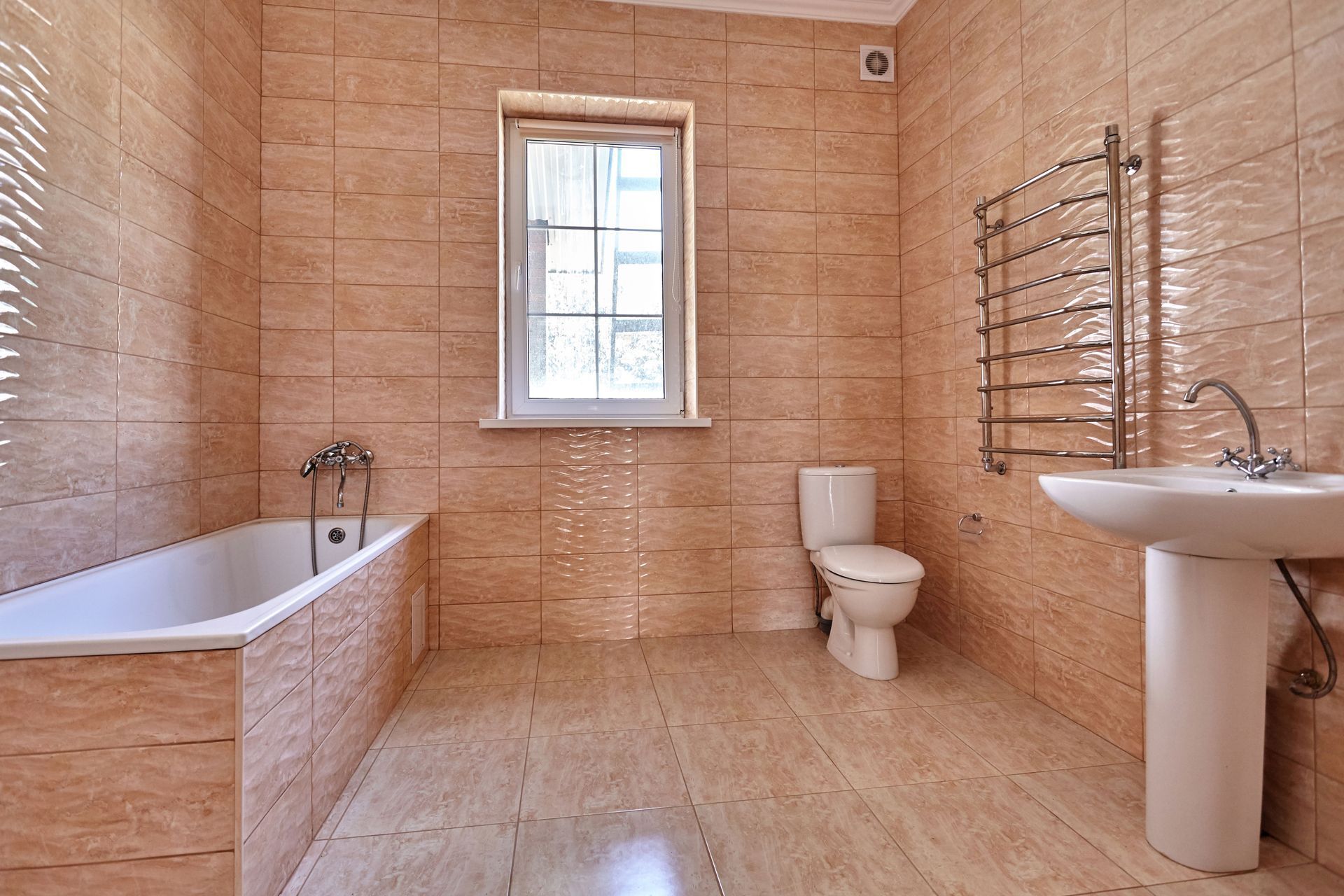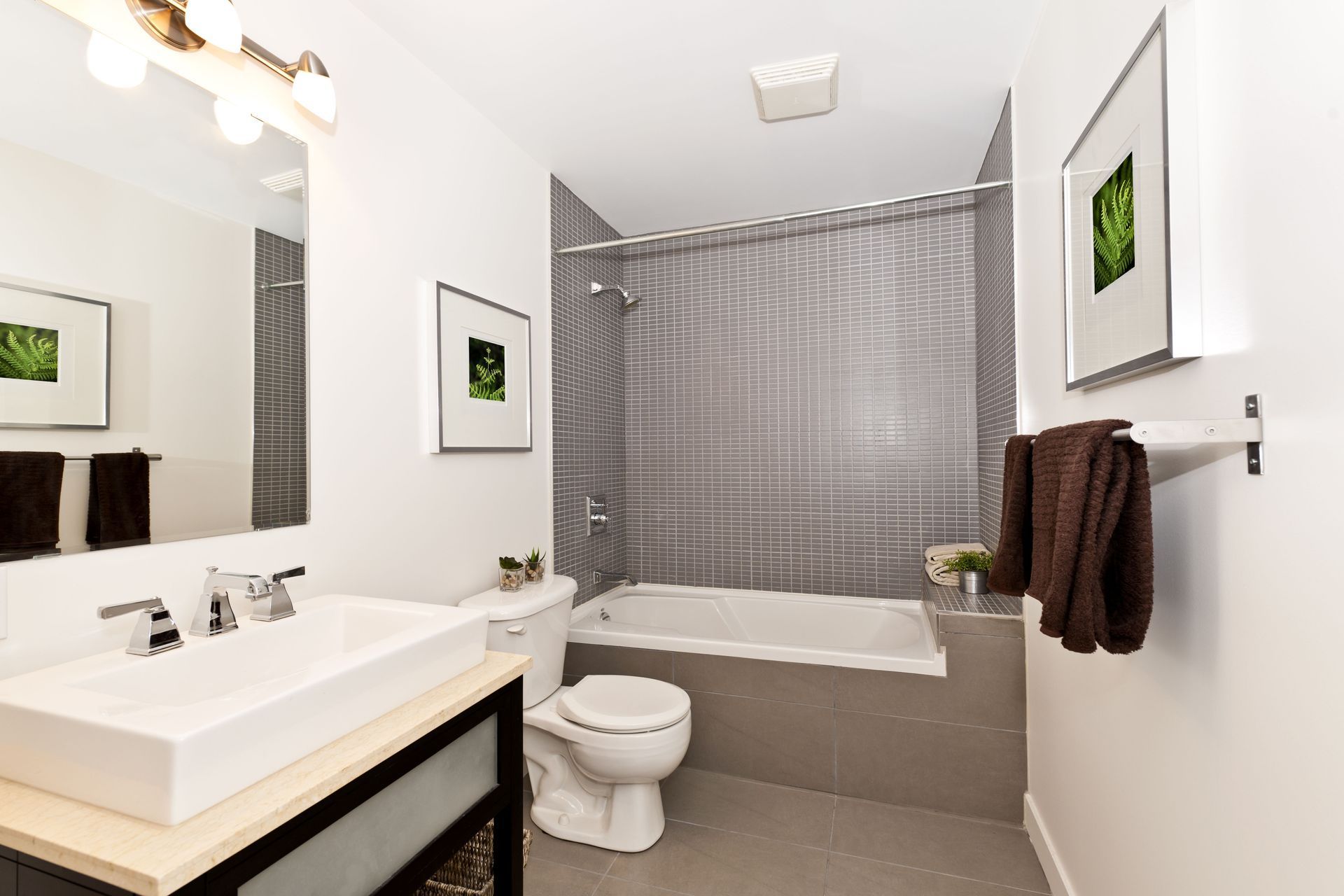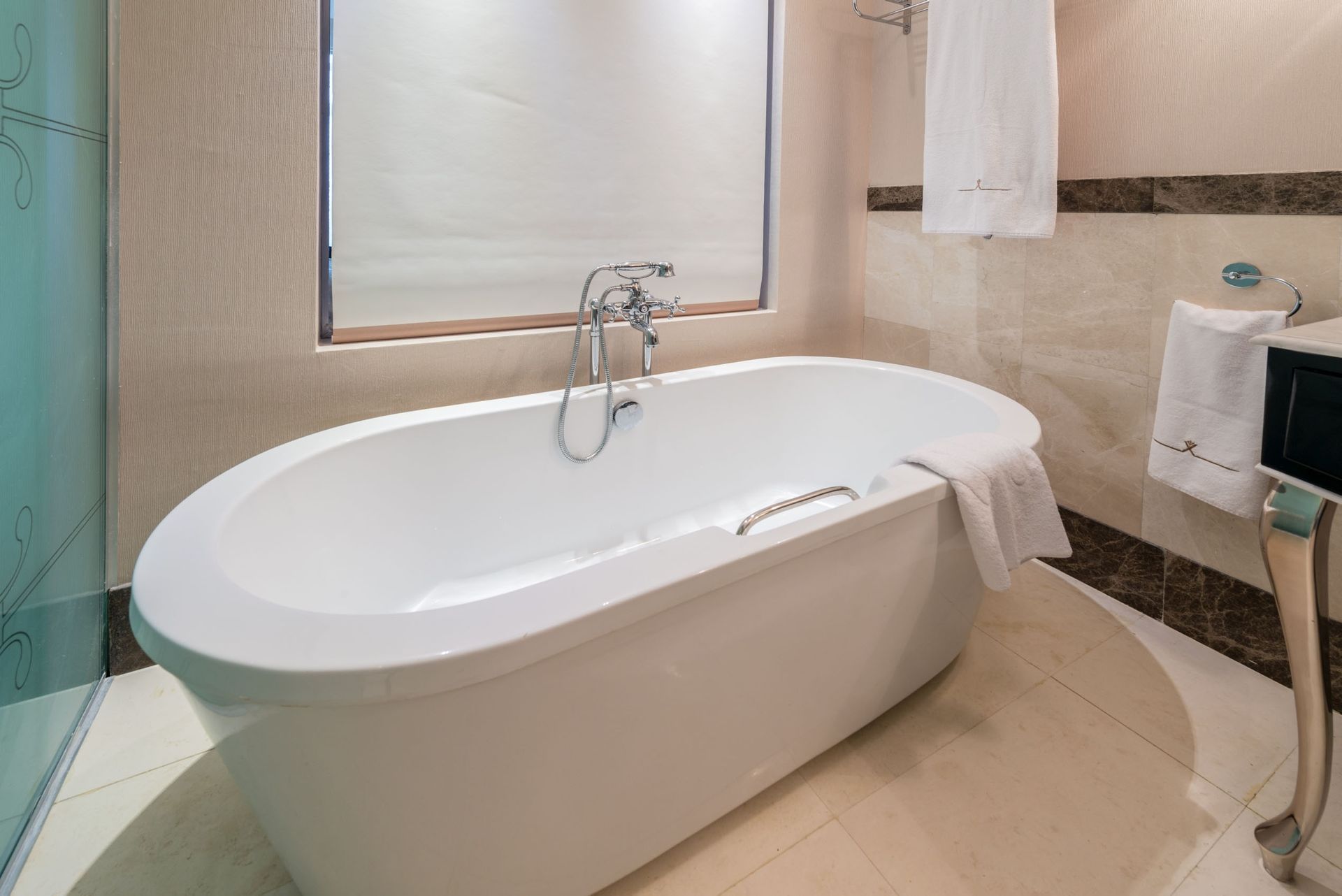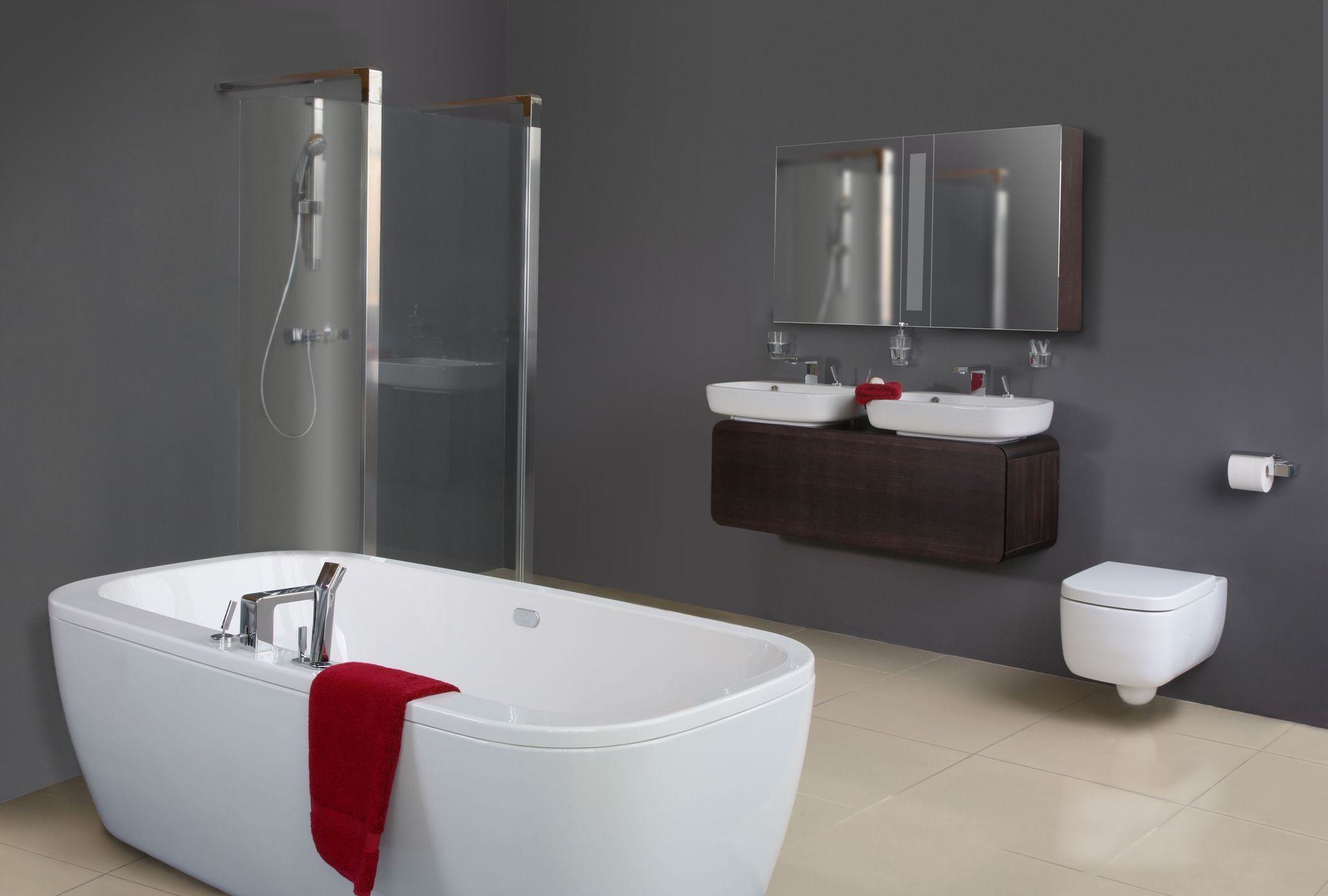July 29, 2025
Innovative approaches and practical tips can make your bathing habits more environmentally friendly. With growing concerns over water scarcity and environmental sustainability, every small effort in reducing water consumption makes a significant difference. Dipping into your bathtub, rather than showering, could be a surprising yet effective way to conserve water. As we investigate this method of water conservation, we will also uncover various economic, environmental, and technological benefits.
Water Usage
Contrary to popular belief, bathing in a tub can save more water than taking a shower. According to the Spa Bath Co., a typical bath only uses around 80 liters of water, compared to the 136 liters of water that a typical shower uses. This shows that with careful usage, baths can be more efficient in terms of water conservation. Many people tend to underestimate their water consumption during showers, particularly when they extend beyond a few minutes. Therefore, understanding these differences and making conscious choices can contribute significantly to water conservation.
Water consumption rates vary geographically and culturally, but the fundamental issue remains the same: excessive usage is unsustainable. The average American household uses approximately 400 gallons per day, according to EPA estimates. Bathroom utilities, predominantly toilets, showers, and baths, account for over 50% of this consumption. This alarming statistic underscores the necessity for widespread adoption of water-saving habits. With such high stakes, reconsidering how we use water in our daily lives is a step forward.
The environmental implications of excessive water use extend beyond just depleting water supplies. Wasteful practices can lead to additional greenhouse gas emissions associated with water treatment and heating. Furthermore, unnecessary water use stresses local water bodies and ecosystems, which can result in biodiversity loss. Thus, even small modifications in personal water usage can have substantial environmental benefits.
Contrary to popular belief, bathing in a tub can save more water than taking a shower. According to the Spa Bath Co., a typical bath only uses around 80 liters of water, compared to the 136 liters of water that a typical shower uses. This shows that with careful usage, baths can be more efficient in terms of water conservation. Many people tend to underestimate their water consumption during showers, particularly when they extend beyond a few minutes. Therefore, understanding these differences and making conscious choices can contribute significantly to water conservation.
Water consumption rates vary geographically and culturally, but the fundamental issue remains the same: excessive usage is unsustainable. The average American household uses approximately 400 gallons per day, according to EPA estimates. Bathroom utilities, predominantly toilets, showers, and baths, account for over 50% of this consumption. This alarming statistic underscores the necessity for widespread adoption of water-saving habits. With such high stakes, reconsidering how we use water in our daily lives is a step forward.
The environmental implications of excessive water use extend beyond just depleting water supplies. Wasteful practices can lead to additional greenhouse gas emissions associated with water treatment and heating. Furthermore, unnecessary water use stresses local water bodies and ecosystems, which can result in biodiversity loss. Thus, even small modifications in personal water usage can have substantial environmental benefits.
Economic Benefits
By choosing baths over showers, consumers can achieve substantial savings on their water bills. Given the disparity in water usage between showers and baths, regularly opting for baths can reduce household water consumption significantly. As energy is required to treat and heat water, cutting down on water use also means reduced energy costs. In the long run, these cumulative savings become significant. Thus, adopting water-saving bathing practices not only benefits the environment but also leads to financial relief.
Government and various environmental bodies offer financial incentives to promote water conservation techniques. Rebates and discounts on water-saving fixtures are commonly available, encouraging homeowners to make sustainable choices. Additionally, some regions provide tax incentives to households that demonstrate reduced water consumption. By leveraging these incentives, individuals not only minimize expenses but also contribute to broader conservation efforts. Examining local programs can further enhance personal financial advantage while promoting responsible water use.
The long-term financial benefits of adopting water-conserving practices extend beyond just utility savings. As water scarcity continues to pose challenges globally, investing in conservation today safeguards against future water price surges. Furthermore, implementing sustainable practices and utilizing services from bathtub refinishers can increase property value, as potential buyers often consider water-efficient homes more attractive. Therefore, integrating water-saving habits into daily routines is both a wise financial investment and an environmentally conscious choice. Recognizing the future economic landscape helps drive the adoption of responsible practices today. This could include the use of bathtub refinishing contractors to create a more efficient way to save water.
By choosing baths over showers, consumers can achieve substantial savings on their water bills. Given the disparity in water usage between showers and baths, regularly opting for baths can reduce household water consumption significantly. As energy is required to treat and heat water, cutting down on water use also means reduced energy costs. In the long run, these cumulative savings become significant. Thus, adopting water-saving bathing practices not only benefits the environment but also leads to financial relief.
Government and various environmental bodies offer financial incentives to promote water conservation techniques. Rebates and discounts on water-saving fixtures are commonly available, encouraging homeowners to make sustainable choices. Additionally, some regions provide tax incentives to households that demonstrate reduced water consumption. By leveraging these incentives, individuals not only minimize expenses but also contribute to broader conservation efforts. Examining local programs can further enhance personal financial advantage while promoting responsible water use.
The long-term financial benefits of adopting water-conserving practices extend beyond just utility savings. As water scarcity continues to pose challenges globally, investing in conservation today safeguards against future water price surges. Furthermore, implementing sustainable practices and utilizing services from bathtub refinishers can increase property value, as potential buyers often consider water-efficient homes more attractive. Therefore, integrating water-saving habits into daily routines is both a wise financial investment and an environmentally conscious choice. Recognizing the future economic landscape helps drive the adoption of responsible practices today. This could include the use of bathtub refinishing contractors to create a more efficient way to save water.
Environmental Impact
Efficient water usage directly correlates with reducing one's carbon footprint. The energy required to pump, heat, and treat water contributes to overall carbon emissions. By reducing water consumption, these energy demands are equally lessened. As a result, individuals make a tangible difference in combating climate change. Thus, mindful bathing practices can lead to meaningful environmental benefits on a macro scale.
Preserving local water sources is crucial for maintaining ecological balance and sustaining human needs. Excessive water extraction can deplete aquifers and strain freshwater supplies, leading to adverse environmental impacts. By conserving water, individuals help to sustain these vital resources. This concerted effort aids in maintaining regional biodiversity and securing water availability for future generations. Consequently, individual actions translate into broader ecological preservation.
The overuse of water can lead to significant environmental degradation, impacting both natural habitats and human communities. Wetland desiccation, soil erosion, and reduced stream flow are direct consequences of excessive water use. Conversely, mindful water consumption mitigates these effects, contributing to environmental preservation. Practicing water conservation supports ecosystem resilience and protects natural landscapes. Not only do these efforts bolster environmental integrity, but they also promote sustainability for future generations.
Efficient water usage directly correlates with reducing one's carbon footprint. The energy required to pump, heat, and treat water contributes to overall carbon emissions. By reducing water consumption, these energy demands are equally lessened. As a result, individuals make a tangible difference in combating climate change. Thus, mindful bathing practices can lead to meaningful environmental benefits on a macro scale.
Preserving local water sources is crucial for maintaining ecological balance and sustaining human needs. Excessive water extraction can deplete aquifers and strain freshwater supplies, leading to adverse environmental impacts. By conserving water, individuals help to sustain these vital resources. This concerted effort aids in maintaining regional biodiversity and securing water availability for future generations. Consequently, individual actions translate into broader ecological preservation.
The overuse of water can lead to significant environmental degradation, impacting both natural habitats and human communities. Wetland desiccation, soil erosion, and reduced stream flow are direct consequences of excessive water use. Conversely, mindful water consumption mitigates these effects, contributing to environmental preservation. Practicing water conservation supports ecosystem resilience and protects natural landscapes. Not only do these efforts bolster environmental integrity, but they also promote sustainability for future generations.
Practical Steps
Adjusting bathwater levels is an effective way to conserve water without sacrificing comfort. Filling the tub halfway instead of completely can drastically reduce water use. Using less water requires minimal behavioral adjustment, yet it significantly impacts overall consumption. Moreover, choosing the appropriate water level minimizes heat loss, thus conserving energy. Adopting this simple practice is an easy and impactful first step in water conservation during bathing.
Efficient bath scheduling can further aid in conserving water during peak usage hours. Plan your baths during off-peak hours to avoid strains on local water systems, especially during winter when hot water is in high demand. Shortening bath duration without compromising relaxation is another effective strategy. Setting a timer ensures a quick, refreshing dip while conserving water. Embracing time-efficient habits not only saves water but also promotes sustainable bathing rituals.
Reusing bathwater is an eco-friendly practice for maximizing water utility. Greywater systems enable water repurposing, such as garden irrigation or toilet flushing, thereby reducing waste. This practice involves minimal effort yet results in significant water savings. Engaging in water repurposing reflects personal responsibility towards resource conservation. By employing greywater systems at home, individuals contribute to sustainable practices while enjoying eco-conscious benefits.
Adjusting bathwater levels is an effective way to conserve water without sacrificing comfort. Filling the tub halfway instead of completely can drastically reduce water use. Using less water requires minimal behavioral adjustment, yet it significantly impacts overall consumption. Moreover, choosing the appropriate water level minimizes heat loss, thus conserving energy. Adopting this simple practice is an easy and impactful first step in water conservation during bathing.
Efficient bath scheduling can further aid in conserving water during peak usage hours. Plan your baths during off-peak hours to avoid strains on local water systems, especially during winter when hot water is in high demand. Shortening bath duration without compromising relaxation is another effective strategy. Setting a timer ensures a quick, refreshing dip while conserving water. Embracing time-efficient habits not only saves water but also promotes sustainable bathing rituals.
Reusing bathwater is an eco-friendly practice for maximizing water utility. Greywater systems enable water repurposing, such as garden irrigation or toilet flushing, thereby reducing waste. This practice involves minimal effort yet results in significant water savings. Engaging in water repurposing reflects personal responsibility towards resource conservation. By employing greywater systems at home, individuals contribute to sustainable practices while enjoying eco-conscious benefits.
Bath Technologies
Smart bath systems utilize cutting-edge technology to optimize water usage and enhance the overall bathing experience. These systems offer features such as temperature control, timers, and water monitoring, ensuring an eco-friendly bath. By using sensors and smartphone integration, users benefit from a personalized and efficient bathing routine. These technological advancements reflect the shift towards sustainable home solutions. Embracing smart bath systems transforms everyday rituals into sustainable practices.
Eco-friendly
bathtub refinishers
reduce environmental impact while offering luxurious comfort. These materials minimize resource consumption and provide long-lasting durability. Using eco-friendly materials aligns lifestyle choices with sustainable practices. Through conscious selection of bath materials, individuals support sustainable development initiatives.
Automated water monitoring devices offer real-time insights into household water consumption. By tracking usage patterns, these devices identify potential overspending and aid in conserving water more effectively. With alerts and reports, users can promptly address anomalies, resulting in reduced wastage. This proactive approach aligns with smart home initiatives, facilitating resource management. Automated devices empower individuals to take control of water consumption for sustainable living.
Smart bath systems utilize cutting-edge technology to optimize water usage and enhance the overall bathing experience. These systems offer features such as temperature control, timers, and water monitoring, ensuring an eco-friendly bath. By using sensors and smartphone integration, users benefit from a personalized and efficient bathing routine. These technological advancements reflect the shift towards sustainable home solutions. Embracing smart bath systems transforms everyday rituals into sustainable practices.
Eco-friendly bathtub refinishers reduce environmental impact while offering luxurious comfort. These materials minimize resource consumption and provide long-lasting durability. Using eco-friendly materials aligns lifestyle choices with sustainable practices. Through conscious selection of bath materials, individuals support sustainable development initiatives.
Automated water monitoring devices offer real-time insights into household water consumption. By tracking usage patterns, these devices identify potential overspending and aid in conserving water more effectively. With alerts and reports, users can promptly address anomalies, resulting in reduced wastage. This proactive approach aligns with smart home initiatives, facilitating resource management. Automated devices empower individuals to take control of water consumption for sustainable living.
Community Initiatives
Local community programs play a critical role in advancing water conservation goals. These initiatives involve educational workshops, water audits, and collaborative solutions to reduce local water footprints. Participation in community programs fosters a collective spirit of environmental responsibility, enhancing communal well-being. Through shared knowledge and practices, communities build resilience against water scarcity. Active engagement positions individuals as vital contributors to sustainable community development. You can also look into bathtub refinishing contractors to advance your conversation goals.
Examining successful water conservation case studies provides valuable insights into replicable methods and strategies. These studies highlight best practices, drawing lessons from diverse contexts and experiences worldwide. Successful initiatives often feature shared responsibility, innovative technologies, and communal dedication to conservation goals. By analyzing these examples, individuals derive inspiration and adopt tailored solutions to their water conservation efforts. Understanding these stories empowers personal and collective action towards a sustainable future.
As households adopt more sustainable bathing practices, the collective impact will ripple across communities and ecosystems. By understanding the environmental, economic, and technological advantages, individuals are empowered to make informed choices. It is through concerted efforts that we can ensure a sustainable future for our planet's most invaluable resource. For more information about the services that we offer, reach out to our incredible team at Bath Magic today!
Local community programs play a critical role in advancing water conservation goals. These initiatives involve educational workshops, water audits, and collaborative solutions to reduce local water footprints. Participation in community programs fosters a collective spirit of environmental responsibility, enhancing communal well-being. Through shared knowledge and practices, communities build resilience against water scarcity. Active engagement positions individuals as vital contributors to sustainable community development. You can also look into bathtub refinishing contractors to advance your conversation goals.
Examining successful water conservation case studies provides valuable insights into replicable methods and strategies. These studies highlight best practices, drawing lessons from diverse contexts and experiences worldwide. Successful initiatives often feature shared responsibility, innovative technologies, and communal dedication to conservation goals. By analyzing these examples, individuals derive inspiration and adopt tailored solutions to their water conservation efforts. Understanding these stories empowers personal and collective action towards a sustainable future.
As households adopt more sustainable bathing practices, the collective impact will ripple across communities and ecosystems. By understanding the environmental, economic, and technological advantages, individuals are empowered to make informed choices. It is through concerted efforts that we can ensure a sustainable future for our planet's most invaluable resource. For more information about the services that we offer, reach out to our incredible team at Bath Magic today!






